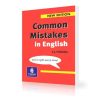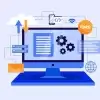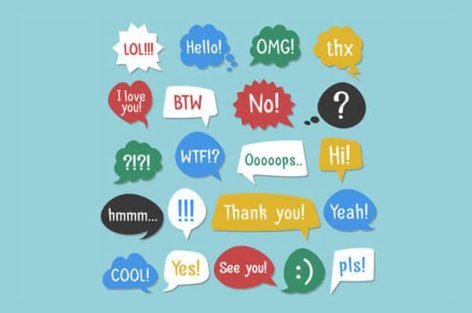
Inversion چیست؟ گرامر وارونگی در زبان انگلیسی چگونه است؟ وارونگی در جملات انگلیسی چگونه اتفاق می افتد؟ وارونگی در گرامر انگلیسی به چه شکل است؟ اینها سوالاتی است که در این پست از وبلاگ لینگومن به آن ها خواهیم پرداخت. در ادامه با ما همراه باشید.
Inversion چیست؟ و وارونگی در زبان انگلیسی چگونه اتفاق می افتد؟
Inversion یا وارونگی در گرامر انگلیسی در واقع همان وارونگی ترتیب کلمات در یک ساختار است. اکثر اوقات این وارونگی برای فاعل و فعل اتفاق می افتد. در حالت عادی فاعل قبل از فعل می آید ولی وقتی که ما از وارونگی استفاده می کنیم فاعل بعد از فعل (که معمولا فعل کمکی است) بکار می رود، که در سوالات بسیار رایج است. برای روشن تر شدن وارونگی در سوالات به دو مثال زیر توجه کنید:
Ali plays chess => Does Ali play chess?
She is working => Is she working?
همانطور که می بینید در خصوص جای فاعل (Ali) و فعل (Does) وارونگی شکل گرفته است. در جمله دوم نیز همین اتفاق افتاده است.
وارونگی در موقعیت های دیگر نیز اتفاق می افتد که رایج ترین آنها موارد زیر هستند:
قید های منفی
در موقعیت های رسمی ما از قید هایی که بار منفی دارند در ابتدای یک جمله برای تاکید استفاده می کنیم؛ قید هایی مثل never, rarely, scarcely, hardly, seldom و غیره. در چنین جملاتی فاعل و فعل کمکی جایشان عوض می شود.
I have never done that => Never have I done that
One seldom hear him say sorry => Seldom one does hear him say sorry
اصطلاحاتی که با not شروع می شوند
ما همچنین جای فاعل و فعل را بعد از not + حرف اضافه یا بعد از یک عبارت در ابتدای جمله عوض می کنیم:
Not for a moment did I forget how hard it would be
Not till I got to the office did I realize I had left my keys at home
کلمات here و there
وارونگی وقتی که کلمات here و there قید های مکان هستند می تواند اتفاق بیفتد. بعد از این دو کلمه ما می توانیم از یک فعل اصلی بدون فعل کمکی استفاده کنیم.
Here comes the bus
Here is your wallet
I opened the door and there stood Reza
There goes Michael
فیلم آموزش Inversion چیست؟ و وارونگی در جملات انگلیسی
در ادامه از شما دعوت می کنیم به مقاله ای انگلیسی در خصوص توضیح اینکه Inversion چیست؟ و وارونگی در انگلیسی چگونه اتفاق می افتد؟
Definition and Examples of Inversion in English Grammar
In English grammar, inversion is a reversal of normal word order, especially the placement of a verb ahead of the subject (subject-verb inversion). The rhetorical term for inversion is hyperbaton. Also called stylistic inversion and locative inversion.
Questions in English are usually characterized by an inversion of the subject and the first verb in the verb phrase.
See Examples and Observations below. Also, see:
Subject-Auxiliary Inversion (SAI)
Anastrophe
Ascriptive Sentence
Cleft
Dummy It
Existential There
Fronting
Interrogative Sentence
NICE Properties
Notes on Do: 10 Things You Can Do With the Verb Do
Optative Mood
Passivization
Pied-Piping
Presentational Construction
Semi-Negative
Syntax
There-Transformation
Wh-Question
Etymology
From the Latin, “turn”

Examples and Observations
“In a hole in the ground there lived a hobbit.”
(J.R.R. Tolkein, The Hobbit, 1937)
“What they talked of all evening long, no one remembered next day.”
(Ray Bradbury, Dandelion Wine, 1957)
“Not until the seventeenth century did the fork appear in England.”
(Henry Petroski, The Evolution of Useful Things. Alfred A. Knopf, 1992)
“There on the tiny stoop sat Pecola in a light red sweater and blue cotton dress.”
(Toni Morrison, The Bluest Eye. Holt, Rinehart and Winston, 1970)
“There in the dusty light from the one small window on shelves of roughsawed pine stood a collection of fruitjars and bottles with ground glass stoppers and old apothecary jars all bearing antique octagon labels edged in red upon which in Echols’ neat script were listed contents and dates.”
(Cormac McCarthy, The Crossing. Random House, 1994)
“Not in the legions
Of horrid hell can come a devil more damned
In ills to top Macbeth.”
(William Shakespeare, Macbeth)
“Half an hour later came another inquiry as to tugs. Later came a message from the Irene, telling of the lifting of the fog.”
(The New York Times, April 7, 1911)
“There’s a lady wants to see you. Miss Peters her name is.”
(P.G. Wodehouse, Something Fresh, 1915)
“The man who first saw that it was possible to found a European empire on the ruins of the Mogul monarchy was Dupleix.”(Thomas Macaulay)
“Also arrested were eight other suspects who allegedly worked secretly for ETA while maintaining the appearance of normal lives, Rubalcaba said at a nationally-televised news conference in Madrid.”(Al Goodman, “Nine ETA Bombing Suspects Arrested.” CNN.com, July 22, 2008)
The Preposed Element
“In subject-dependent inversion the subject occurs in postponed position while some other dependent of the verb is preposed. A considerable range of elements may invert with the subject in this way . . . . In the great majority of cases the preposed element is a complement, usually of the verb be.”
(Rodney Huddleston and Geoffrey K. Pullum, The Cambridge Grammar of the English Language, Cambridge University Press, 2002)
Subject-Verb Inversion
“Subject-verb inversion normally is limited as follows:
– The verb phrase consists of a single verb word, in the past or present tense.
– The verb is an intransitive verb of position (be, stand, lie, etc.) or verb of motion (come, go, fall, etc.)
– The topic element . . . is an adverbial of place or direction (e.g., down, here, to the right, away):
[informal speech]
Here’s a pen, Brenda.
Here comes McKenzie.
Look, there are your friends.
[more formal, literary]
There, at the summit, stood the castle in its medieval splendour.
Away went the car like a whirlwind.
Slowly out of its hangar rolled the gigantic aircraft.
The examples from [informal speech] give end-focus to the subject. In [literary style] the fronted topic is more useful in giving end-weight to a long subject.”
(Geoffrey Leech and Jan Svartvik, A Communicative Grammar of English, 3rd ed. Routledge, 2002/2013)
Do-support
“[T]ypical verbs do not themselves permit inversion, but rather require what is traditionally called do-support (i.e. have inverted forms which require the use of the dummy auxiliary do): cf. (a) * Intends he to come?
(b) Does he intend to come?
(c) * Saw you the mayor?
(d) Did you see the mayor?
(e) * Plays he the piano?
(f) * Does he play the piano? (Andrew Radford, Syntax: A Minimalist Introduction. Cambridge University Press, 1997)
The Natural Order
“Inversion is so common in English prose that it may be said to be quite as much in accordance with the genius of the language as any other figure; indeed, in many cases it may well be doubted whether there is any real inversion at all. Thus it may be quite as much the natural order to say, ‘Blessed are the pure in heart,’ as to say, ‘The pure in heart are blessed.'”
(James De Mille, The Elements of Rhetoric, 1878)
Pronunciation: in-VUR-zhun
Source: https://www.thoughtco.com/inversion-grammar-term-1691193
[promotion id=”16398″ ]
 لینگومن | لینگومن | خرید و دانلود کتاب، نرم افزار، فیلم و انیمیشن آموزش زبان
لینگومن | لینگومن | خرید و دانلود کتاب، نرم افزار، فیلم و انیمیشن آموزش زبان

















سلام. یکی از کامل ترین و جامع ترین مقاله ها رو در مورد گرامر Inversion خوندم. ممنون از شما